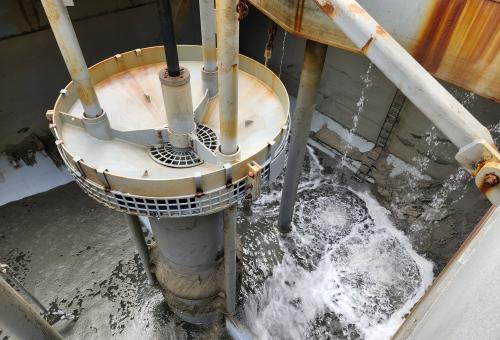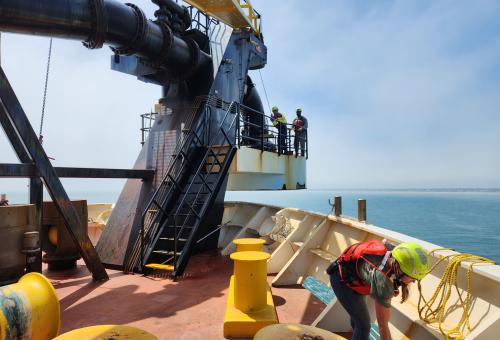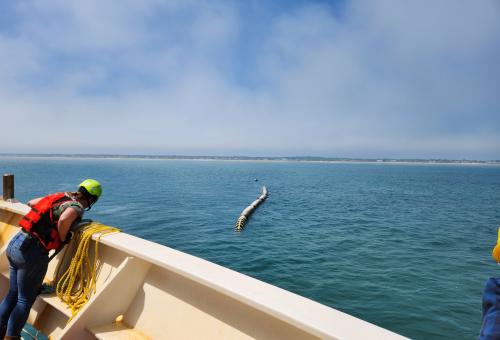The Outer Banks are a string of barrier islands off the coast of North Carolina. Commonly referred to as “OBX” by locals and tourists, these islands are one of the most popular tourist destinations on the East Coast, boasting more than 5 million visitors each year.
In addition to being a top vacation destination, the structure of the barrier islands is critical to protecting the coastal community and ecosystem from extreme weather events. When waves and storms crash into the dunes and grasses, these areas absorb the energy and protect the mainland. Over the years, OBX beaches have been severely impacted by hurricanes, nor’easters, and naturally occurring erosion.
BOEM takes pride in working alongside local organizations. For this project, BOEM partnered closely with Coastal Protection Engineering LLC (CPE). CPE served as Dare County's engineer for this joint effort. CPE also supported Dare County by helping to fulfill the terms of the lease with project management services and permit compliance. BOEM and CPE have a history of successful collaboration in this area, including the 2017 Dare County renourishment project. Projects like these reduce storm damage and preserve recreational beaches cherished by visitors, which ensures the local tourism-driven economy continues to thrive.
More About the Beach Nourishment Process

A hopper dredge off the coast of the Outer Banks in 2022.
Interior and bow of a hopper dredge. View of the pipe transporting OCS sand from the dredge to the OBX shore.
During a beach nourishment project, sand located in the OCS is collected using a hopper dredge. A hopper dredge is a specialized piece of equipment, not unsimilar to a floating bucket, that uses what is essentially a vacuum to gather sand from the sea floor. Once the hopper is full, it sails to a pump out location where it connects to a long pipe that extends to the shore. The accumulated sand is then pumped from the hopper and transported to the beach through the pipe.

Bulldozers relocate OCS sand around an OBX pier in 2022.
Once the dredged sand reaches the end of the pipe located onshore, it is maneuvered into place using heavy machinery. A carefully designed engineering plan dictates the sand’s exact placement.
Why are Marine Minerals Important?
OCS sand resources, such as the sand provided for the OBX project, are in critical supply along the Atlantic and Gulf coasts. As the sole steward of OCS marine minerals, BOEM must know the location, and quantity, and character of sand resources available for coastal protection and restoration projects. BOEM invests millions annually in state-of-the-art mineral resource identification and complementary environmental research to support these crucial projects that preserve America’s beautiful beaches.
To learn more about BOEM’s role in beach replenishment projects, check out the Marine Minerals page on our website or check the 5 facts to know about the Minerals Program article.
The images and videos included in the article have been provided by and belong to Coastal Protection Engineering LLC.
This story is part of the “Unleashing the Science” series, showcasing how bureaus within the Department of the Interior produce and apply science to ensure responsible management decisions for our planet now and for the future.
--BOEM--
The Department of the Interior’s Bureau of Ocean Energy Management (BOEM) manages development of U.S. Outer Continental Shelf (OCS) energy, mineral, and geological resources in an environmentally and economically responsible way.





